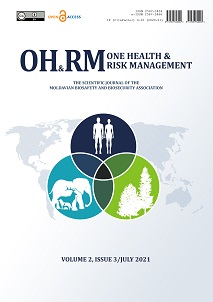Abstract
Introduction. The microbial biofilm-forming ability is one of the major aspects of the emerging issue of antibiotic resistance, which makes them tolerant to antibiotics and host defense systems and other external stresses, thus contributing to persistent chronic infections. A series of relevant studies confirmed the high efficiency of aminopropanol derivatives as potential antibacterial and antifungal agents. This present study was aimed to evaluate the antimicrobial activity of new 1-[(2,4-(di-tert-butylphenoxy))-3-dialkylamino-2-propanol] derivatives on the planktonic bacterial/fungal cells and biofilms.
Material and methods. The minimum inhibitory concentrations (MIC) of the new compounds were determined by a standard method, along with their effects on biofilms estimated via the gentian violet adsorption-desorption assay.
Results. The КVM-219 compound showed the most pronounced effect on planktonic bacterial and fungal cells. The MIC values ranged between 0.78 μg/mL to 12.5 μg/mL, depending on the microbial strain. The KVM-316 compound exhibited the strongest inhibitory effect on biofilms, thus preventing their formation by S. aureus (96.1%), E. coli (57.2%), and P. aeruginosa (96.1%).
Conclusions. The 15 newly synthesized 1-[(2,4-(di-tert-butylphenoxy))-3-dialkylamino-2-propanol] derivatives revealed marked antibacterial and antifungal effects on planktonic microorganisms. Most of these compounds showed a strain-specific inhibition of biofilm formation by at least 50% for S. aureus 222, E. coli 311, P. aeruginosa 449 and C. glabrata 404 strains.
|
 Views: 433|
|
Views: 433|
|
